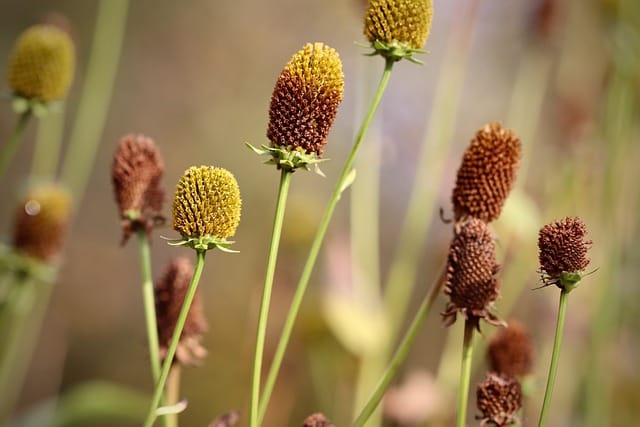How to grow Rudbeckias
Rudbeckias, commonly known as coneflowers, are beautiful and vibrant flowers that can add a splash of color to any garden

In this article:
- Introduction
- Selecting the Right Rudbeckia Variety
- Choosing the Appropriate Location
- Preparing the Soil for Rudbeckias
- Planting Rudbeckia Seeds
- Caring for Rudbeckia Seedlings
- Watering and Fertilizing Rudbeckias
- Mulching and Weed Control
- Supporting Rudbeckia Plants
- Pruning and Deadheading Rudbeckias
- Dealing with Common Pests and Diseases
- Division and Propagation of Rudbeckias
- Overwintering Rudbeckia Plants
- Enjoying the Blooms of Rudbeckias
- Frequently Asked Questions About Growing Rudbeckias
- Conclusion
Introduction
Rudbeckias, commonly known as coneflowers, are beautiful and vibrant flowers that can add a splash of color to any garden. They are relatively easy to grow and can thrive in a variety of climates. In this article, we will guide you through the process of growing Rudbeckias, from selecting the right variety to enjoying the blooms.
Selecting the Right Rudbeckia Variety
There are numerous varieties of Rudbeckias available, each with its own unique characteristics. Some popular varieties include Rudbeckia hirta, Rudbeckia fulgida, and Rudbeckia triloba. When selecting a variety, consider factors such as height, color, and flowering time.
Choosing the Appropriate Location
Rudbeckias prefer full sun but can tolerate partial shade. They also need well-draining soil to avoid waterlogged roots. Choose an area in your garden that receives at least six hours of direct sunlight per day and has good drainage.
Preparing the Soil for Rudbeckias
Before planting Rudbeckia seeds, prepare the soil by removing any weeds or grass and loosening it with a garden fork. Incorporate organic matter, such as compost, into the soil to improve fertility and drainage.
Planting Rudbeckia Seeds
Rudbeckia seeds can be sown directly into the garden or started indoors. If starting indoors, sow the seeds in seed trays filled with seed-starting mix. Keep the soil moist and provide sufficient light until the seedlings are ready to be transplanted outdoors.
Caring for Rudbeckia Seedlings
Once the seedlings have developed a few sets of true leaves, they can be transplanted into the garden. Space the seedlings according to the recommended spacing for the chosen variety. Water the seedlings thoroughly after transplanting to help them establish in their new location.
Watering and Fertilizing Rudbeckias
Rudbeckias require regular watering, especially during hot and dry periods. Water the plants deeply at the base to encourage deep root growth. Apply a balanced fertilizer, such as a 10-10-10 or 14-14-14, once a month during the growing season to promote healthy growth and abundant blooms.
Mulching and Weed Control
Apply a layer of organic mulch, such as straw or wood chips, around the Rudbeckia plants to help conserve moisture, suppress weed growth, and regulate soil temperature. Regularly inspect the area for weeds and remove them promptly to prevent competition for nutrients.
Supporting Rudbeckia Plants
In areas with strong winds or heavy rain, it may be necessary to provide support for taller Rudbeckia varieties. Install stakes or plant supports around the plants early in the growing season to prevent them from leaning or breaking.
Pruning and Deadheading Rudbeckias
Prune Rudbeckia plants in early spring to remove any dead or damaged growth. Deadhead faded flowers regularly to encourage continuous blooming and prevent self-seeding. Cut the flower stalks back to the base of the plant once the blooms have finished.
Dealing with Common Pests and Diseases
Rudbeckias are generally resistant to pests and diseases. However, they can occasionally be affected by aphids, slugs, or powdery mildew. Regularly inspect the plants for any signs of infestation or disease and take appropriate measures, such as using organic insecticides or fungicides, to control the problem.
Division and Propagation of Rudbeckias
Rudbeckias can be divided every two to three years to maintain their vigor and prevent overcrowding. Carefully dig up the clumps and separate them into smaller sections, ensuring each division has enough roots and shoots. Replant the divisions in well-prepared soil and water thoroughly.
Overwintering Rudbeckia Plants
Rudbeckias are perennials and can survive winter in colder climates. However, it is recommended to mulch the plants with a layer of straw or leaves to protect the roots from freezing temperatures. In regions with extremely cold winters, consider covering the plants with burlap or bringing potted plants indoors.
Enjoying the Blooms of Rudbeckias
Rudbeckias generally start blooming in mid to late summer and continue until the first frost. The vibrant and daisy-like flowers make excellent cut flowers and can be enjoyed in bouquets and floral arrangements.
Frequently Asked Questions About Growing Rudbeckias
Q: Can I grow Rudbeckias in containers?
A: Yes, some dwarf varieties of Rudbeckias can be grown successfully in containers. Use a well-draining potting mix and ensure the container has drainage holes.
Q: When is the best time to plant Rudbeckia seeds?
A: Rudbeckia seeds can be planted in early spring or late autumn. Spring planting allows the plants to establish before the summer heat, while autumn planting takes advantage of natural stratification during winter.
Q: How long do Rudbeckias usually live?
A: With proper care, Rudbeckias can live for several years and provide beautiful blooms each season.
Conclusion
Growing Rudbeckias can be a rewarding experience for any gardener. By following the steps outlined in this article, you can successfully cultivate and enjoy these vibrant and resilient flowers in your garden. Remember to select the right variety, provide appropriate care, and take preventive measures against pests and diseases. Happy gardening!
